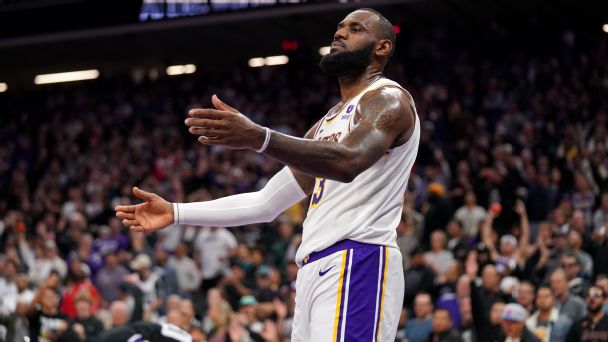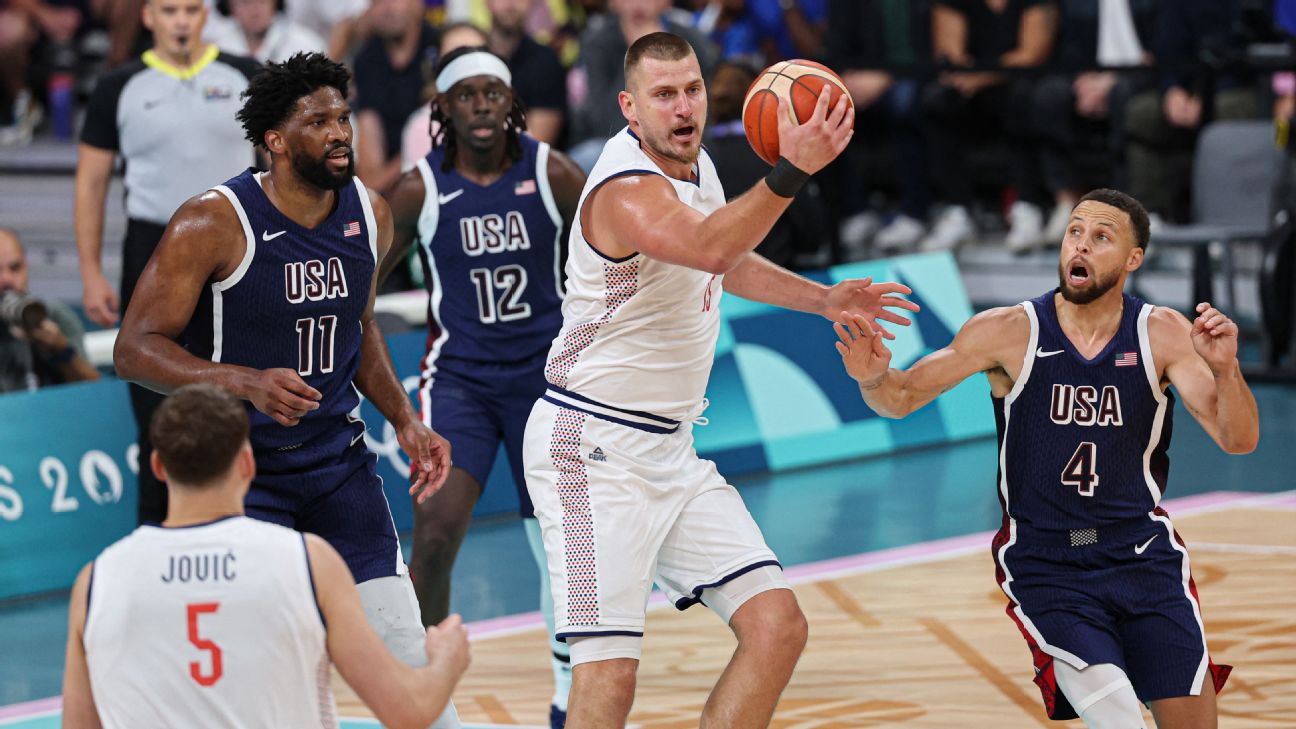It’s been nine days since the defending champion Denver Nuggets opened the season by beating the Los Angeles Lakers on ring night. The Dallas Mavericks, who missed the play-in a year ago, are one of the last two unbeaten teams.
Meanwhile, with Ja Morant serving his 25-game NBA suspension and center Steven Adams sidelined by season-ending knee surgery, the Memphis Grizzlies were the first team to five losses after winning 50-plus games each of the past two years.
Sometimes, a week of play doesn’t tell us very much. This time a year ago, the Portland Trail Blazers were the NBA’s top team at 4-0 before fading into the lottery. Two of the last three winless teams, the Lakers and Sacramento Kings, ended up making the playoffs.
Let’s sort through the data to see whether we can tell which early trends are meaningful and which are not.

Not real: LeBron James’ low usage
James’ minutes limit drew much attention after he played just 29 minutes in the Lakers’ season-opening loss. It pretty quickly proved flexible, as Lakers coach Darvin Ham played James 35 minutes in the Lakers’ first win over the Phoenix Suns and 39-plus minutes in Sunday’s overtime loss in Sacramento.
Less discussed has been James’ step back on offense. He attempted just eight shots in the first three quarters against the Suns and is below a 30% usage overall, which would be James’ lowest mark since his rookie season. In the context of James saying at media day that teammate Anthony Davis is “the face” of the Lakers’ franchise, is this a sign of him relinquishing some control of the offense after posting a 33% usage rate — James’ highest since his first stint with the Cleveland Cavaliers — last season?
As the chart of his average season-to-date usage rate through each game of the schedule across his career shows, James has historically tended to ease into the season in terms of a heavy usage load, allowing teammates to carry a heavier share early in the schedule. His usage rate was even lower (28%) through the first three games of the 2021-22 season, and in the same ballpark five games into his first season with the Lakers (2018-19). James ended both campaigns with his customary 30%-plus usage rate. I’d expect the same this time around.
Mostly real: Chet Holmgren’s fast start
Overshadowed by the totally understandable hoopla over No. 1 pick Victor Wembanyama, Holmgren has been the league’s best rookie thus far after sitting out his first pro season with a Lisfranc injury. Joining an Oklahoma City Thunder team that reached the play-in a year ago, Holmgren has had an easier landing and, at 21, is also 20 months older than 19-year-old Wembanyama.
From the jump, Holmgren — playing exclusively at center — has proved the perfect complement to the Thunder’s core of young perimeter talent that was missing a big man last season. Entering play Wednesday, Holmgren led the NBA by blocking 8% of opponent 2-point attempts. That should come as no surprise as Holmgren was a top-10 shot-blocker in his lone NCAA season at Gonzaga and ranked sixth among players who saw at least 50 minutes of preseason action with a 10% block rate.
Because he’s playing center, Holmgren has been in position to contest more shots than Wembanyama. According to Second Spectrum tracking on NBA Advanced Stats, Holmgren had averaged 10.8 shots defended inside 5 feet, the league’s third-highest mark. Defending largely on the perimeter, Wembanyama has averaged 3.5 shots defended inside 5 feet.
Holmgren surely won’t continue to hit 62.5% of his 3-point attempts, as he did over his first four games (he went 1-for-5 from 3 during the Thunder’s fifth game of the season on Wednesday), but his defensive impact is real — and spectacular.
Not real: Trae Young’s poor shooting
It’s been a rough go for Young, who hit 8 of 35 shots (23%), including 3-of-14 (21%) from 3-point range, as the Atlanta Hawks started 0-2. Even as the Hawks got in the wins category by beating the Milwaukee Bucks on Sunday, Young was still off at 5-of-14.
According to Second Spectrum’s quantified shot probability metric (qSP), which considers distance and type of shot as well as location of nearby defenders and the shooter’s ability, Young is getting just as good shots as last season. So, his qSP is an expected effective field-goal percentage (eFG%) of 49% after accounting for the added value of 3-point shots — same as last season.
Young’s actual 33% eFG% is the product of atypically poor shot making. The difference between his expected and actual eFG%, which Second Spectrum calls quantified shot-making (qSM), is the lowest mark among players with at least 70 shot attempts. Expect his shooting to regress to an All-Star mean.
Real: The Boston Celtics’ start
That the Celtics started 4-0 isn’t terribly surprising. After adding Jrue Holiday and Kristaps Porzingis this offseason, Boston was my pick to win the title and easily had the best wins projection of any team in my stats-based model.
It is impressive that the Celtics won a pair of games despite hot opposing shooting. Before Monday’s blowout win against the Washington Wizards, opponents were hitting a league high 45% of 3s against Boston: 44% for the New York Knicks in the season opener and 48.5% for the Miami Heat in a conference finals rematch. Last season, teams went just 120-371 (.244) when opponents made at least 43% of their 3s. The Celtics were 3-6 in that situation, meaning their two wins so far nearly already match their entire 2022-23 total.
If anything, how well opponents shot simply gave Boston the ability to win close games down the stretch, showcasing what the Celtics hope will be different this season.
Not real: Phoenix Suns’ strong defense
With Bradley Beal yet to play and Devin Booker sitting out the past three games, the Suns haven’t yet been the offensive juggernaut we expected while scoring at a league-average rate. They still won two of their first three games, thanks to a top-five defensive rating. Is this a case of new coach Frank Vogel importing the defensive culture he brought to the Lakers during his first season, which resulted in the 2019-20 championship? Not likely.
Phoenix has benefited from the league’s worst shot-making by opponents. Based on qSP, we’d expect teams to post a 54% eFG% against the Suns thus far, the league’s third-highest mark. Instead, their actual 44.5% eFG% is third-lowest in the NBA. The Lakers and Golden State Warriors combined to shoot just 15-of-72 (21%) from 3-point range against Phoenix, and when the San Antonio Spurs finally became the first Suns opponents to make even a third of their 3s (14-of-37, 38%), they pulled off a late upset Tuesday in the desert.
Once Beal and Booker are back, Phoenix should be able to score enough to overcome the inevitable defensive regression.



